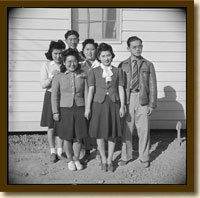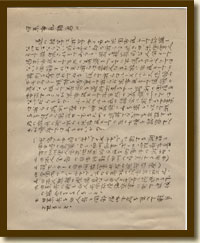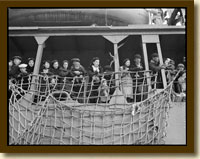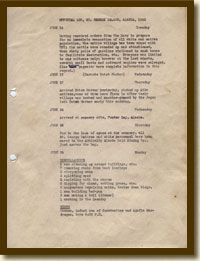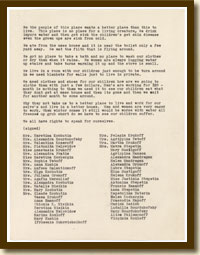Featured Story: Relocation
Seen as necessary security measures, wartime relocations suspended the rights of the affected individual. For some, it would be years before they returned to their homes and businesses.
Brochure, “Relocating a People,”
February 1, 1943
Japanese Settlement, Records of R. H. Rupkey, Project Engineer National Archives, Records of the Bureau of Indian Affairs, Record Group 75 (National Archives Identifier 2641502)
Photograph, George Fujii (on right) at Poston, Arizona, January 4, 1943
Central Photographic File of the War Relocation Authority National Archives, Records of the War Relocation Authority, Record Group 210 (National Archives Identifier 536627)
After the attack on Pearl Harbor, President Roosevelt issued Executive Order 9066, relocating 117,000 Japanese Americans
Handbill in Japanese and English Translation (Japanese shown), United States v. George Fujii, ca. 1943
C6781 [1/2], Criminal Case Files National Archives, Records of District Courts of the United States, Record Group 21 (National Archives Identifier 2641503) (National Archives Identifier 2641504 - in English)
Japanese Americans were targeted during World War II and detained at internment camps, including the Colorado River Relocation Center in Poston, Arizona. Learning that interned Japanese American men were required to register for selective service, George Fujii posted handbills around the camp discouraging draft-age men from cooperating. He was tried for sedition.
Photograph, Pribilof Island Residents Evacuated on U.S. Army Transport Delarof, June 15-16, 1942
National Archives, General Records of the Department of the Navy (NARA 80-G-12163)
Official Logbook, St. George Island,
June 16-29, 1942
Pribilof Islands Logbooks, National Archives, Records of the U.S. Fish and Wildlife Service, Record Group 22 (National Archives Identifier 2641506)
After the Japanese bombing at Dutch Harbor and Japanese occupation of Attu and Kiska Islands (Aleutian Islands) in June 1942, 881 Aleut Americans were relocated from the Aleutian and Pribilof Islands to 4 camps in southeast Alaska. On their return in 1944 and 1945, some Aleuts found their villages leveled, while others found their homes and property had been vandalized, looted, or destroyed by American troops.
Petition Protesting Conditions, Aleut Women, October 10, 1942
Pribilof Island Logbooks Records of the U.S. Fish and Wildlife Service, Record Group 22 (National Archives Identifier 2641505)
While their men were forced to return to the Pribilof Islands to harvest seals for the Government, the Aleut women remained at the Funter Bay Evacuation Camp. They petitioned for better conditions, which were so poor that disease and other causes resulted in a 10-percent death rate.



